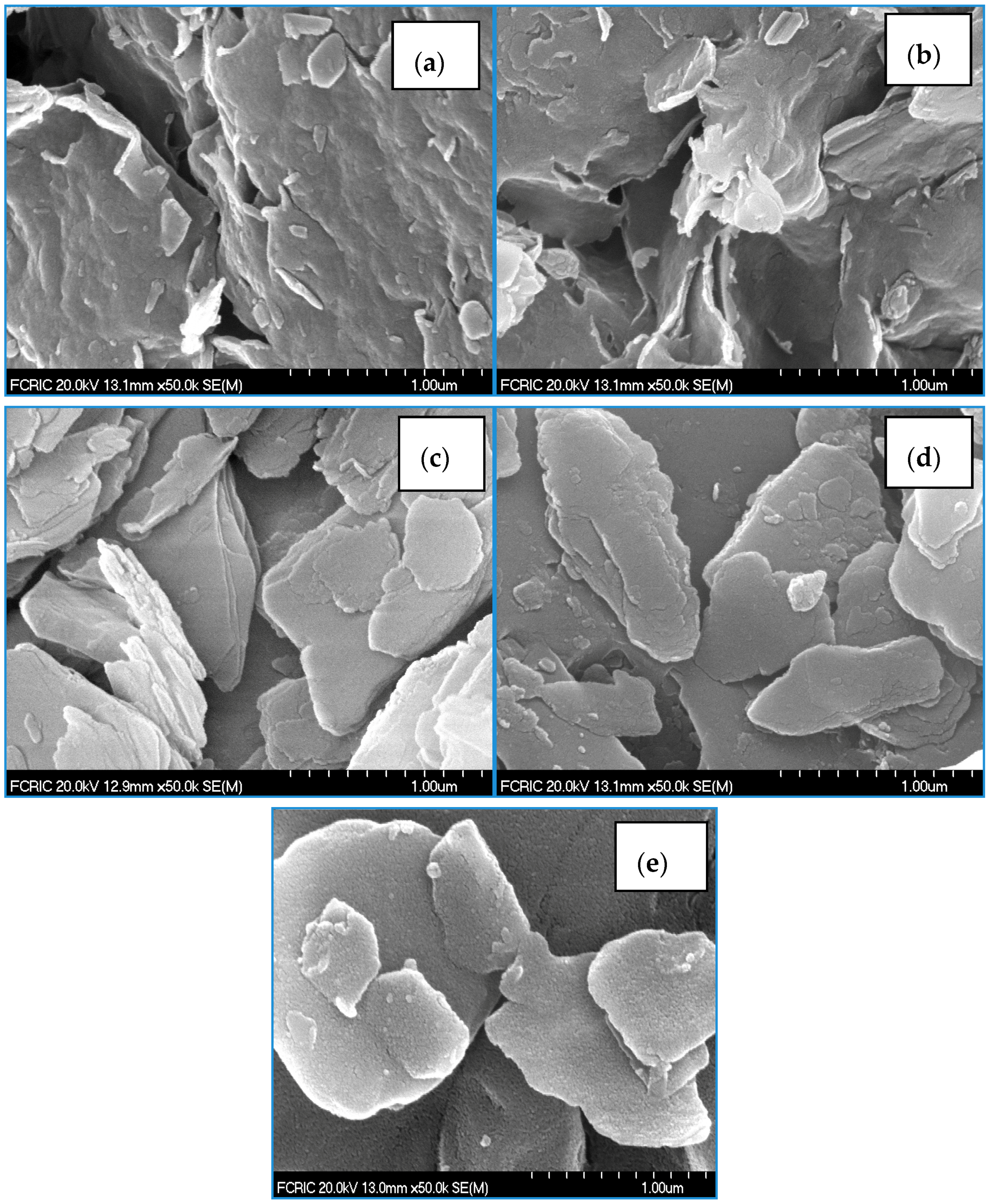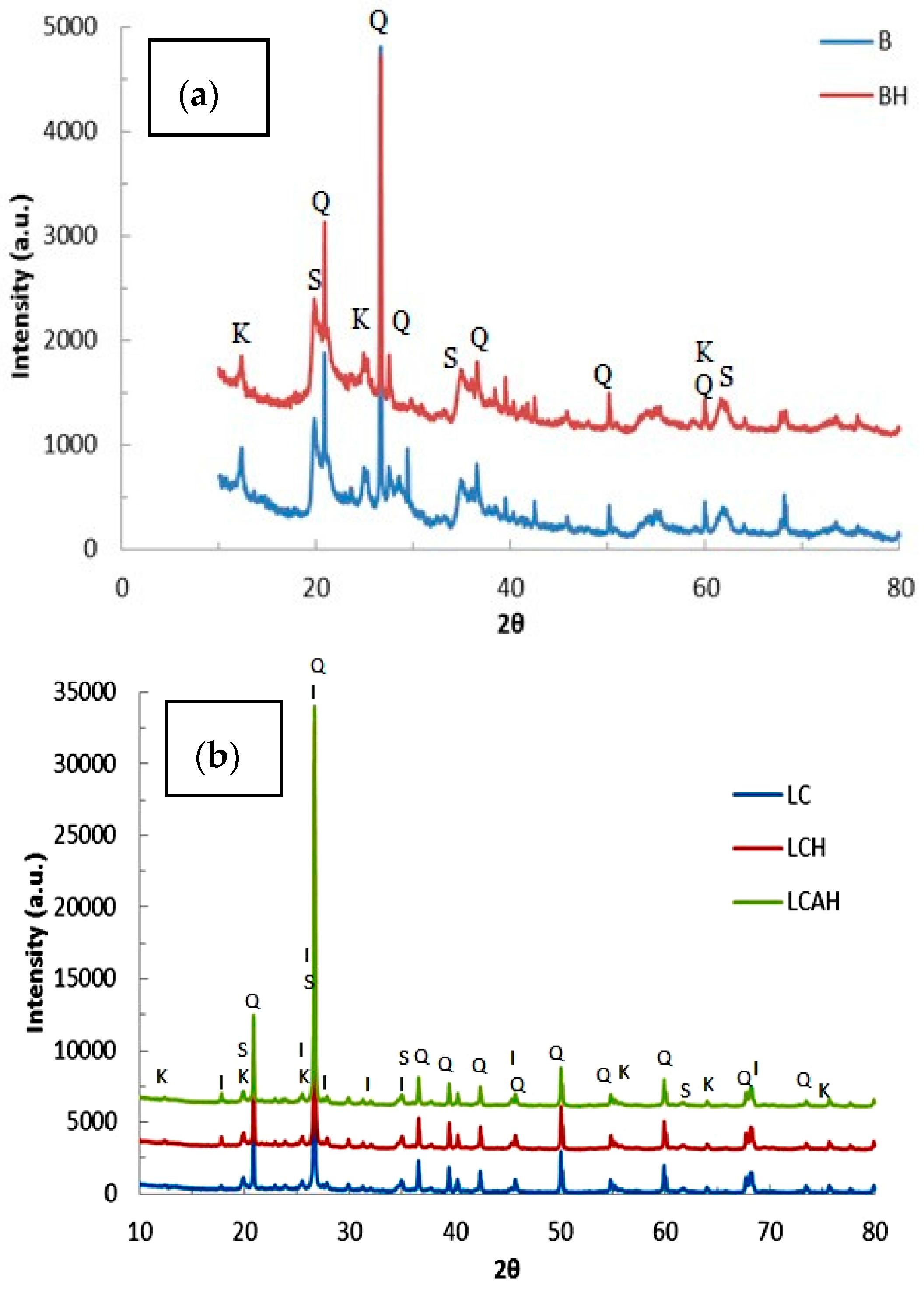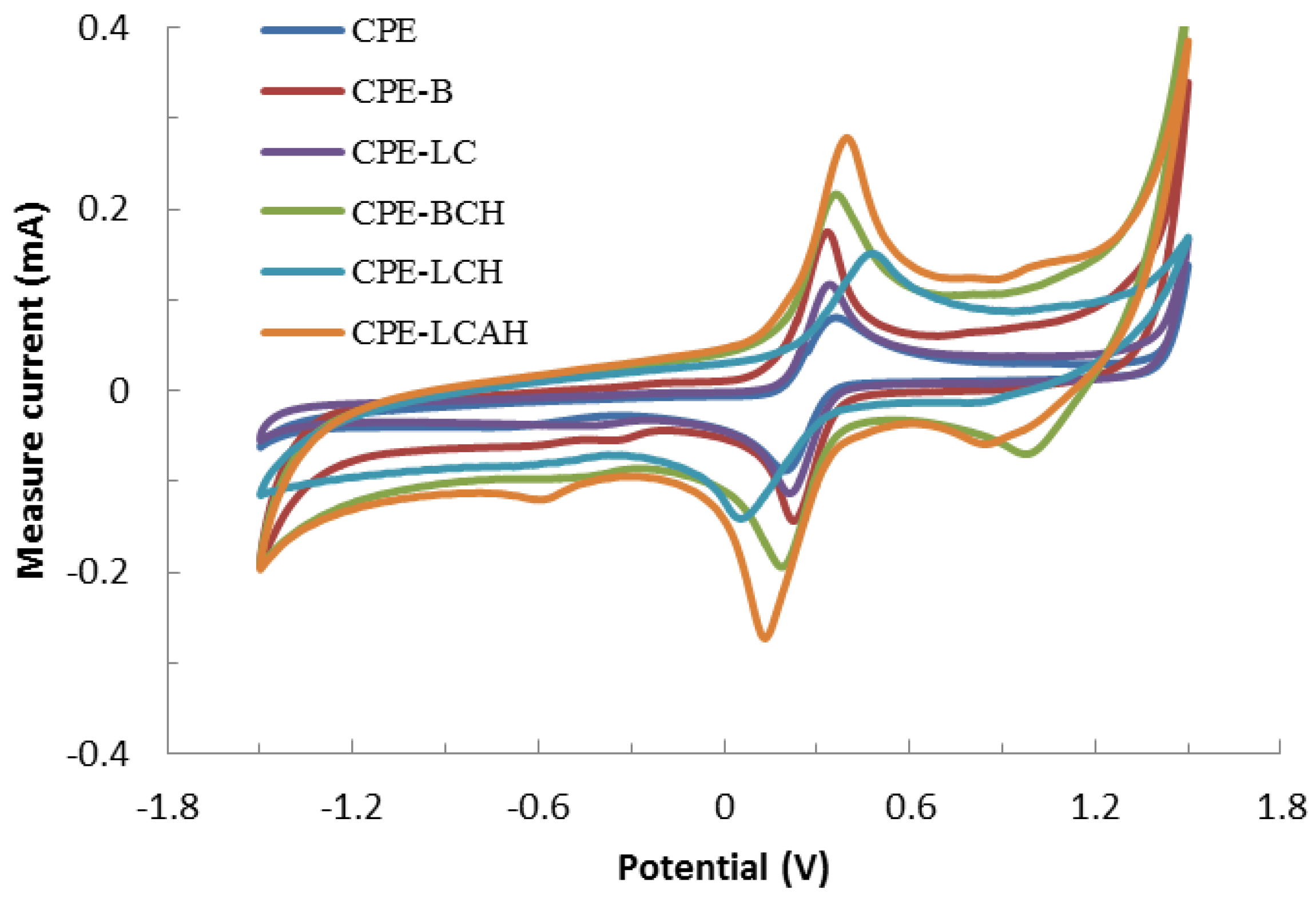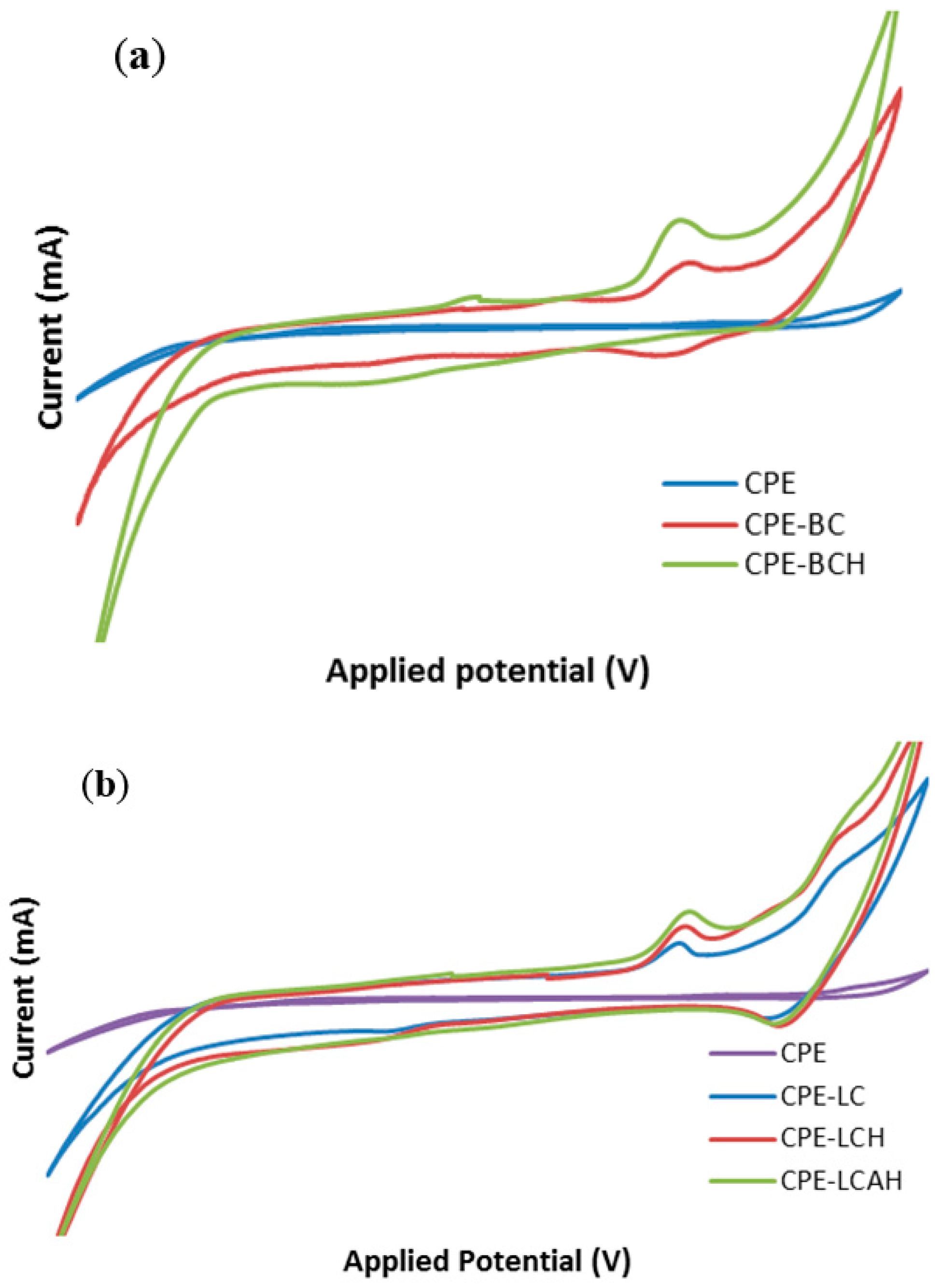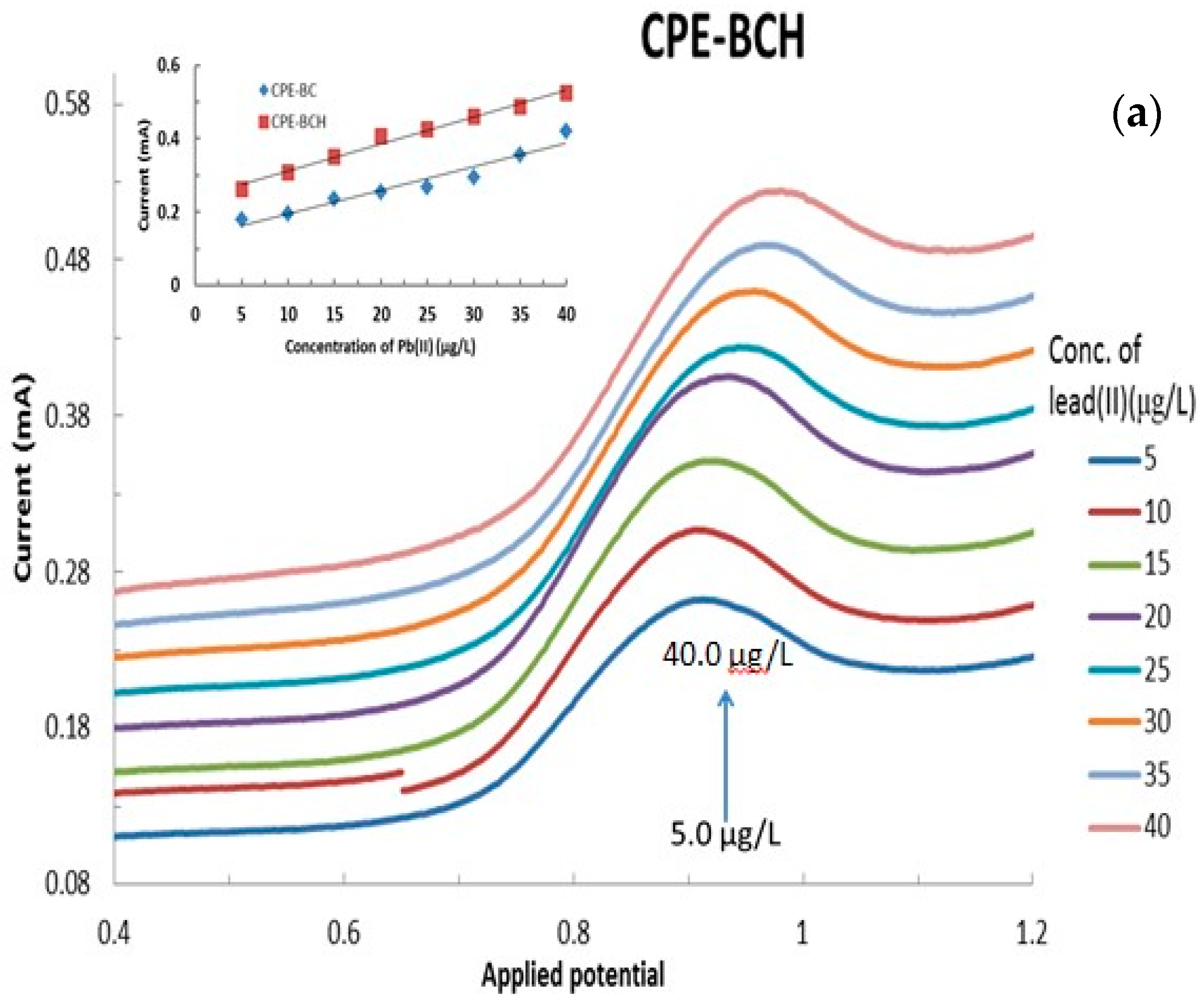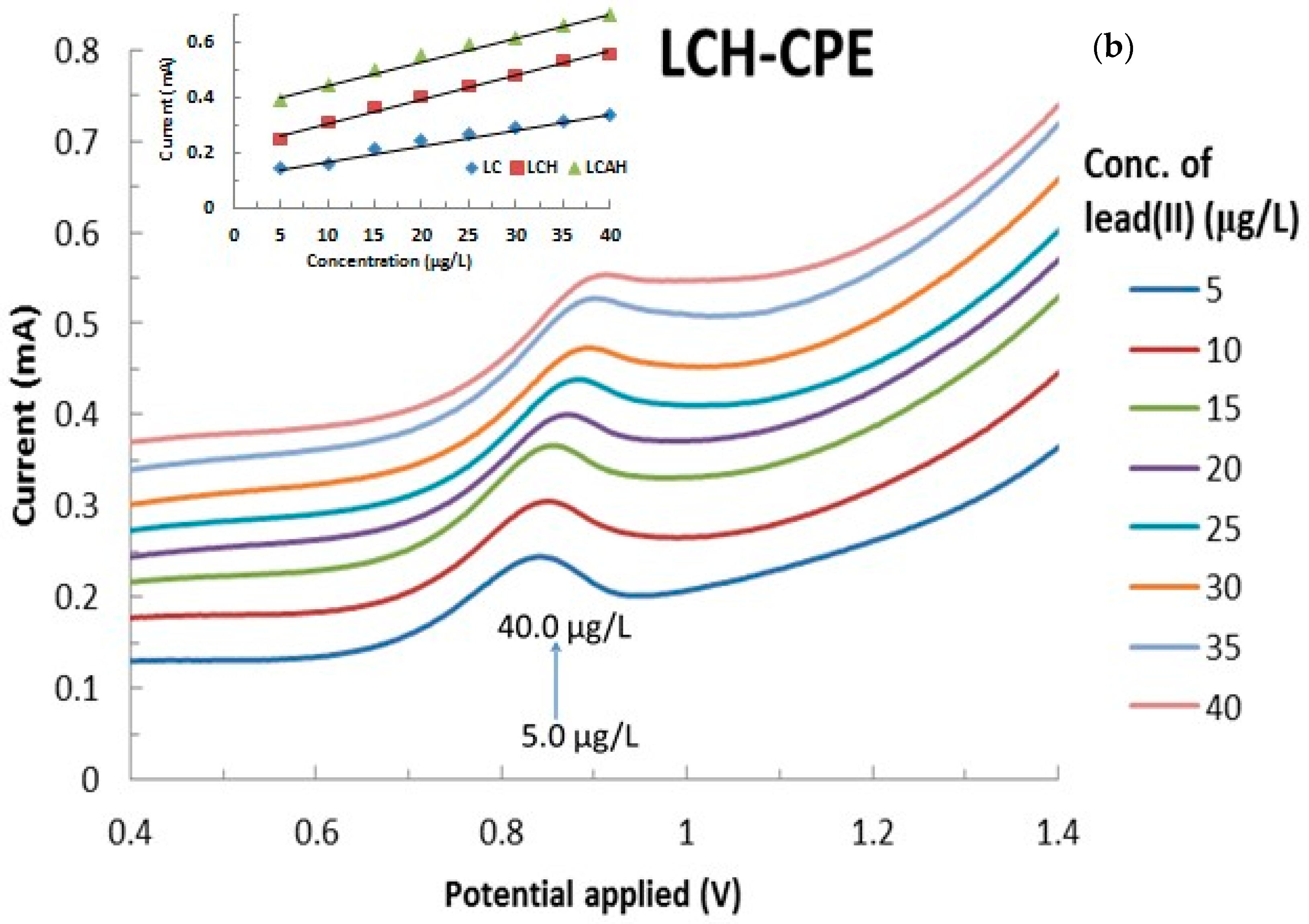Contamination of aquatic environments with heavy metal toxic ions is one of most serious environmental concerns in recent years. Enhanced industrial activities pose further environmental threats to our water bodies [
1]. Industrial effluents that are incompletely treated or untreated are often discharged to the aquatic environment causing detrimental water quality. This ultimately causes adverse effects to human health as well as the aquatic ecosystem. Heavy metals such as lead(II) are highly toxic to human health and an excessive intake of lead(II) causes several severe health problems. Lead poisoning in human being is reflected by neurological, hematological, and renal side effects, viz., genitive and behavioral impairment of infants and children [
2], restraint of the formation of hemoglobin [
3], and chronic kidney dysfunction or hyperuricemia [
4]. Lead enters into the biosystem through all means i.e., air, water, and soil. It was reported previously that a large number of deaths had occurred during the period of 2001 to 2003 in Washington, DC because of the leakage of lead into the drinking water system [
5]. Furthermore, the high biological half-life of lead tends to lead to long term effects in biological systems, e.g., lead persists in bone for more than 20 years [
6]. It is interesting to note that about 20% of lead exposure to human beings is through contaminated drinking water [
7]. Therefore, an efficient, selective, inexpensive, and in situ detection system is needed and is important to protect the environment/ecosystem and in particular human health.
Electrochemical devices have shown promise as alternatives in the detection of several heavy metal toxic ions with achievable selectivity coupled with the lower detection limit down to sub-trace levels. These are found to be useful in the electro-Fenton process, employing an advanced double hydroxide modified carbon-felt cathode [
12]. The greatest drawback of utilizing the electrochemical methods are with its poor selectivity since the interference of co-existing ions hampers the detection of target ion(s) and limited its practical implacability in real matrix samples [
13,
14,
15]. However, the modifications of the working electrodes with the nano- or hybrid materials or nano-composites pave the way for the efficient and selective detection of several target ions from aqueous solutions [
13,
14,
16]. In one study, a micro/nano crystalline boron-doped diamond electrode was optimized for the detection of lead using square-wave anodic stripping voltammetry. The detection limit was found to be 1 μg/L of lead(II) [
6]. Reduced graphene oxide (RGO) was modified with gold to obtain the graphene-Au nano-composite. The nano-composite was electrochemically coated onto the surface of a glassy carbon electrode (GCE) and the modified GCE (G-Au/GCE) was introduced for the detection of lead(II) in 0.1 mol/L acetate buffer (pH 5.3) under the square wave anodic stripping voltammetric (SWASV) measurements. The electroanalytical method provides a detection limit of lead(II) of 0.8 nM [
17]. Indeed, the G-Au/GCE exhibited fairly good selectivity for lead(II) detection even in the presence of Cu
2+. Similarly, mesoporous MnFe
2O
4 nanocrystalline clusters (NC) are synthesized and utilized in the modification of GCE [
18]. Furthermore, the modified GCE is utilized in the selective detection of lead(II) using square wave anodic stripping voltammetry (SWASV) that indicated that the electrode is highly sensitive for lead(II) with the LOD (limit of detection) of 0.054 μM. Moreover, the presence of several cations Cd
2+, Zn
2+, and Hg
2+ did not affect the lead(II) detection. Lead(II) and cadmium(II) are detected using NiO (nickel oxide nano-structures i.e., rods, balls, and flakes) modified glassy carbon electrodes [
19]. Results indicate that the GCE modified with NiO balls possesses an enhanced redox ability having a fairly high electron transferability, which enables its suitable electrochemical detection of lead(II) and cadmium(II). Furthermore, the detection ability for its highest detection sensitivity to lead(II) (13.46 A/M) and cadmium(II) (5.10 A/M) with the lowest detection limit (DL) of 0.08 μM for lead(II) and 0.07 μM for cadmium(II) is obtained for the NiO ball modified GCE. The cerium oxide (CeO
2) nanoparticle-decorated graphene hybrid is synthesized hydrothermally and the GCE is modified with the hybrid material [
20]. The modified GCE is used for the simultaneous detection of cadmium(II), lead(II), copper(II), and mercury(II) from aqueous solutions under the differential pulse anodic stripping voltammetric (DPASV) technique. The oxidation peaks of cadmium(II), lead(II), copper(II), and mercury(II) onto the CeO
2/Graphene GCE is obtained at the applied potentials of ca. −0.76, −0.54, −0.06, and 0.31 V versus the Hg/Hg
2Cl
2 reference electrode that enables the detection of these cations simultaneously. A dual electrochemical and colorimetric technique is introduced for the simultaneous detection of lead(II), cadmium(II), and copper(II). The lead and cadmium are detected electrochemically using a bismuth modified boron doped diamond electrode whereas the copper(II) is detected by the catalytic etching of silver nanoplates (AgNPls) by thiosulfate (S
2O
32−). This is performed using a new microfluidic paper-based analytical device (μPAD) [
21]. The carbon paste electrode (CPE) is suitably modified with the poly(1,8-diaminonaphthalene) and bismuth film (Bi-Poly1,8-DAN/CPE) and employed in the detection of lead(II) using square wave voltammetry in acidic medium [
22]. The analytical method provided a detection limit of 0.3 μg/L for lead(II) with required reproducibility of the results. Therefore, the present communication aims to describe the efficacy of indigenous hybrid materials by exploiting natural clay samples, bentonite (BC) and local clay (LC), as precursor materials. The carbon paste electrode is suitably modified using the hybrid materials (BCH, LCH, and LCAH) to obtain the modified CPEs. The modified CPEs are found to be reliable and cost effective devices for the trace level detection of lead(II) from aqueous solutions. The applicability of the device is further appealing for its in situ detection of lead(II), and interfering ions and tap water samples are tested for its application in real matrix analysis.
